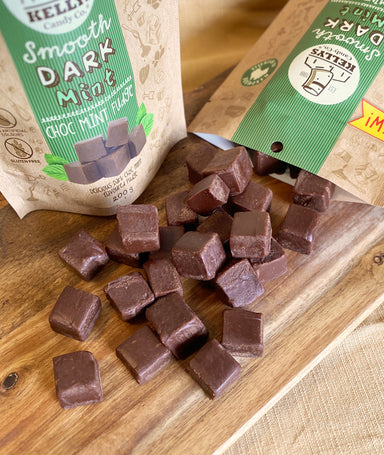I Luv Candi for Beginners
I Luv Candi for Beginners
Blog Article
Everything about I Luv Candi
Table of ContentsThe 7-Second Trick For I Luv CandiWhat Does I Luv Candi Mean?See This Report on I Luv CandiThe Of I Luv CandiI Luv Candi Fundamentals Explained
You can additionally approximate your own profits by applying various assumptions with our monetary prepare for a sweet-shop. Ordinary regular monthly revenue: $2,000 This sort of sweet-shop is usually a tiny, family-run service, perhaps known to citizens yet not drawing in big numbers of vacationers or passersby. The shop might provide a selection of typical candies and a couple of homemade deals with.
The store does not typically lug unusual or expensive things, concentrating instead on budget friendly deals with in order to keep normal sales. Presuming an average investing of $5 per customer and around 400 clients monthly, the monthly profits for this candy shop would be around. Typical monthly profits: $20,000 This candy shop take advantage of its calculated location in an active metropolitan location, drawing in a multitude of consumers seeking wonderful extravagances as they shop.

Along with its diverse sweet option, this shop may also market related items like gift baskets, candy arrangements, and uniqueness items, supplying multiple earnings streams. The shop's place requires a greater allocate rental fee and staffing but causes greater sales quantity. With an estimated ordinary spending of $10 per customer and concerning 2,000 clients each month, this store can generate.
Little Known Facts About I Luv Candi.
Situated in a major city and visitor location, it's a large establishment, commonly spread out over multiple floors and potentially component of a nationwide or global chain. The shop offers an enormous range of candies, consisting of special and limited-edition products, and goods like branded apparel and accessories. It's not just a store; it's a location.
The functional prices for this kind of store are substantial due to the location, size, personnel, and features offered. Thinking a typical purchase of $20 per consumer and around 2,500 consumers per month, this flagship store can accomplish.
Classification Examples of Costs Typical Regular Monthly Expense (Range in $) Tips to Lower Costs Rent and Utilities Shop rental fee, electrical power, water, gas $1,500 - $3,500 Take into consideration a smaller area, bargain rent, and use energy-efficient lights and home appliances. Stock Candy, treats, product packaging materials $2,000 - $5,000 Optimize stock management to minimize go to this site waste and track popular items to stay clear of overstocking.
Everything about I Luv Candi
Advertising And Marketing Printed matter, online advertisements, promos $500 - $1,500 Focus on cost-effective digital advertising and marketing and utilize social media platforms completely free promo. Insurance policy Organization obligation insurance policy $100 - $300 Search for competitive insurance coverage prices and take into consideration packing policies. Devices and Upkeep Sales register, display racks, repairs $200 - $600 Buy secondhand devices when feasible and execute regular maintenance to prolong devices life expectancy.

This implies that the candy store has reached a point where it covers all its taken care of costs and starts producing income, we call it the breakeven point. Think about an example of a sweet-shop where the monthly set prices commonly total up to about $10,000. A rough quote for the breakeven point of a sweet-shop, would certainly after that be about (given that it's the overall fixed cost to cover), or selling in between with a cost variety of $2 to $3.33 each.
I Luv Candi - An Overview
A big, well-located sweet store would clearly have a higher breakeven factor than a tiny store that does not need much profits to cover their expenses. Curious concerning the profitability of your candy shop?
Another risk is competitors from various other sweet-shop or larger merchants that could provide a broader selection of items at lower rates (http://dugoutmugs01.unblog.fr/2024/03/28/i-luv-candi-your-sweet-paradise-on-the-sunshine-coast/). Seasonal changes in need, like a decrease in sales after holidays, can likewise impact earnings. Additionally, altering customer preferences for much healthier snacks or nutritional restrictions can minimize the allure of conventional sweets
Lastly, financial downturns that minimize customer spending can impact sweet-shop sales and success, making it vital for candy stores to handle their expenditures and adapt to changing market conditions to remain profitable. These hazards are typically consisted of in the SWOT evaluation for a sweet-shop. Gross margins and internet margins are essential indications made use of to gauge the success of a sweet-shop service.
See This Report on I Luv Candi
Basically, it's the revenue remaining after subtracting expenses directly pertaining to the sweet stock, such as acquisition expenses from suppliers, manufacturing expenses (if the candies are homemade), and team wages for those associated with production or sales. https://www.metal-archives.com/users/iluvcandiau. Net margin, conversely, factors in all the expenses the sweet shop incurs, including indirect costs like administrative expenses, advertising, lease, and taxes
Candy shops usually have a typical gross margin.For circumstances, if your sweet shop gains $15,000 per month, your gross revenue would be about 60% x $15,000 = $9,000. Think about a sweet shop that sold 1,000 candy bars, with each bar valued at $2, making the total income $2,000.
Report this page